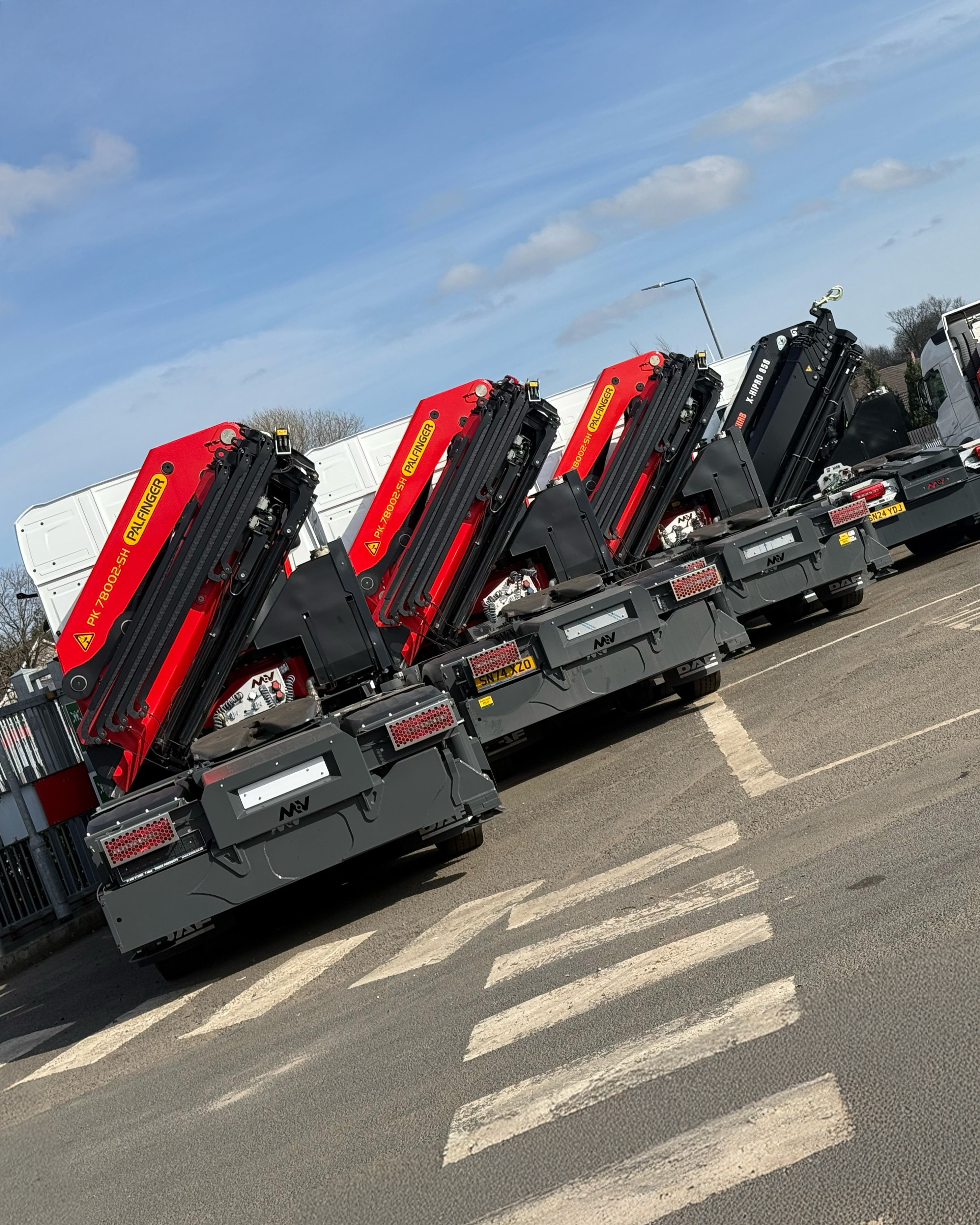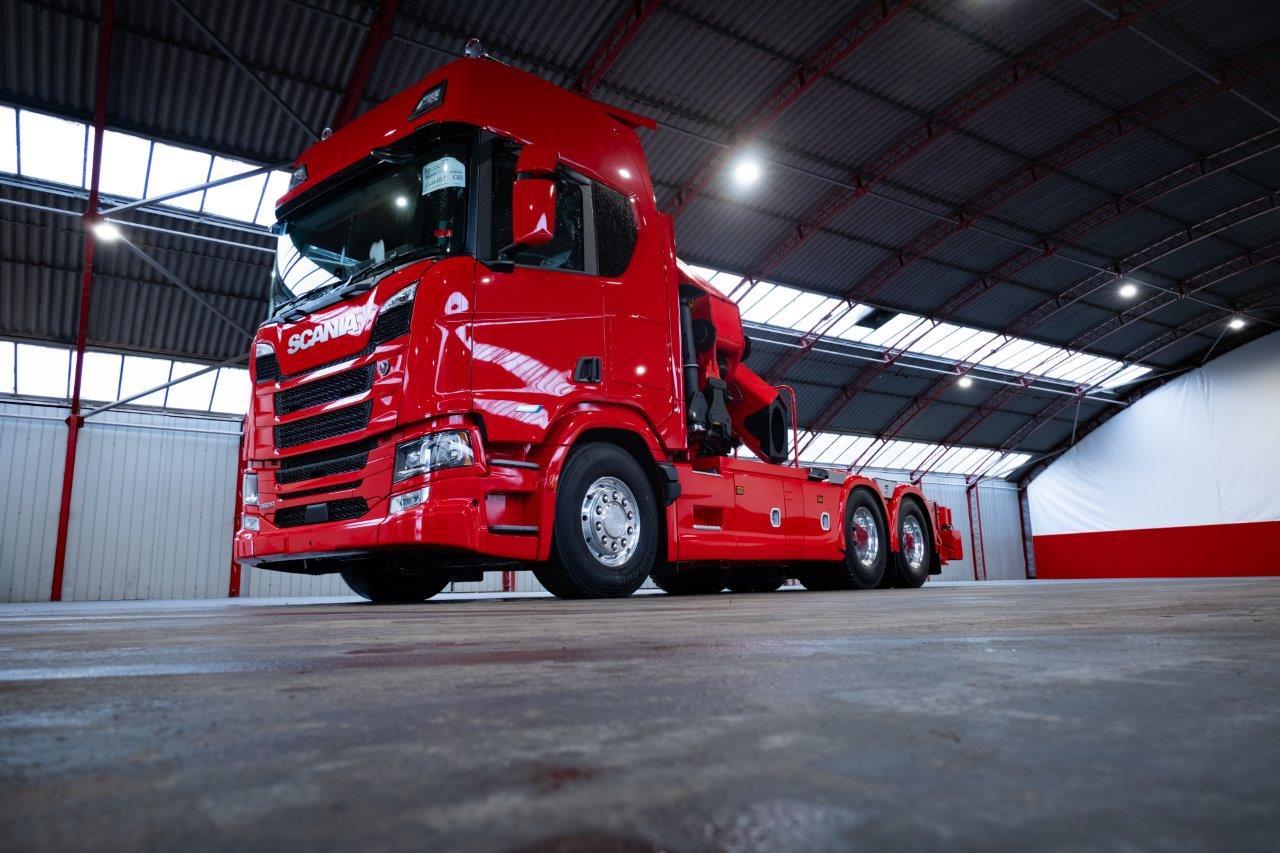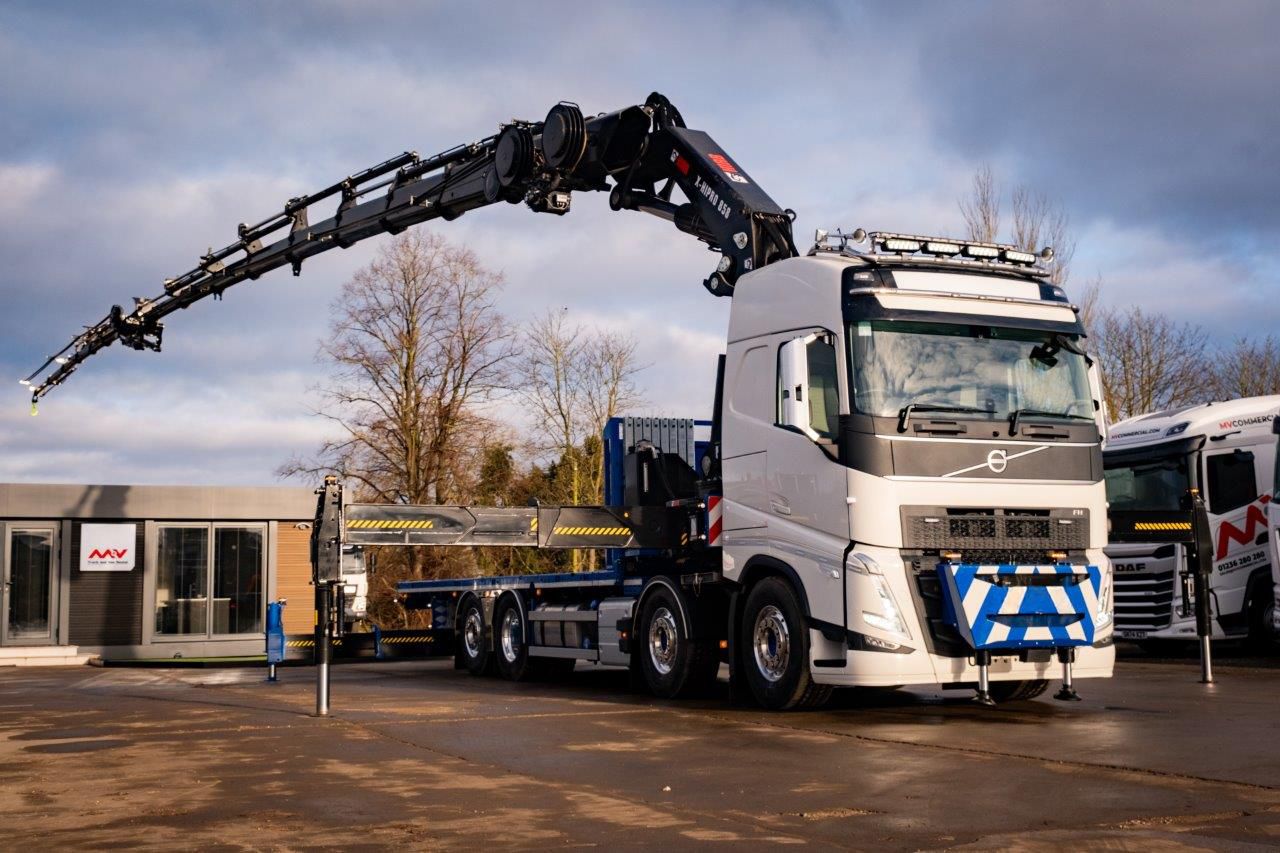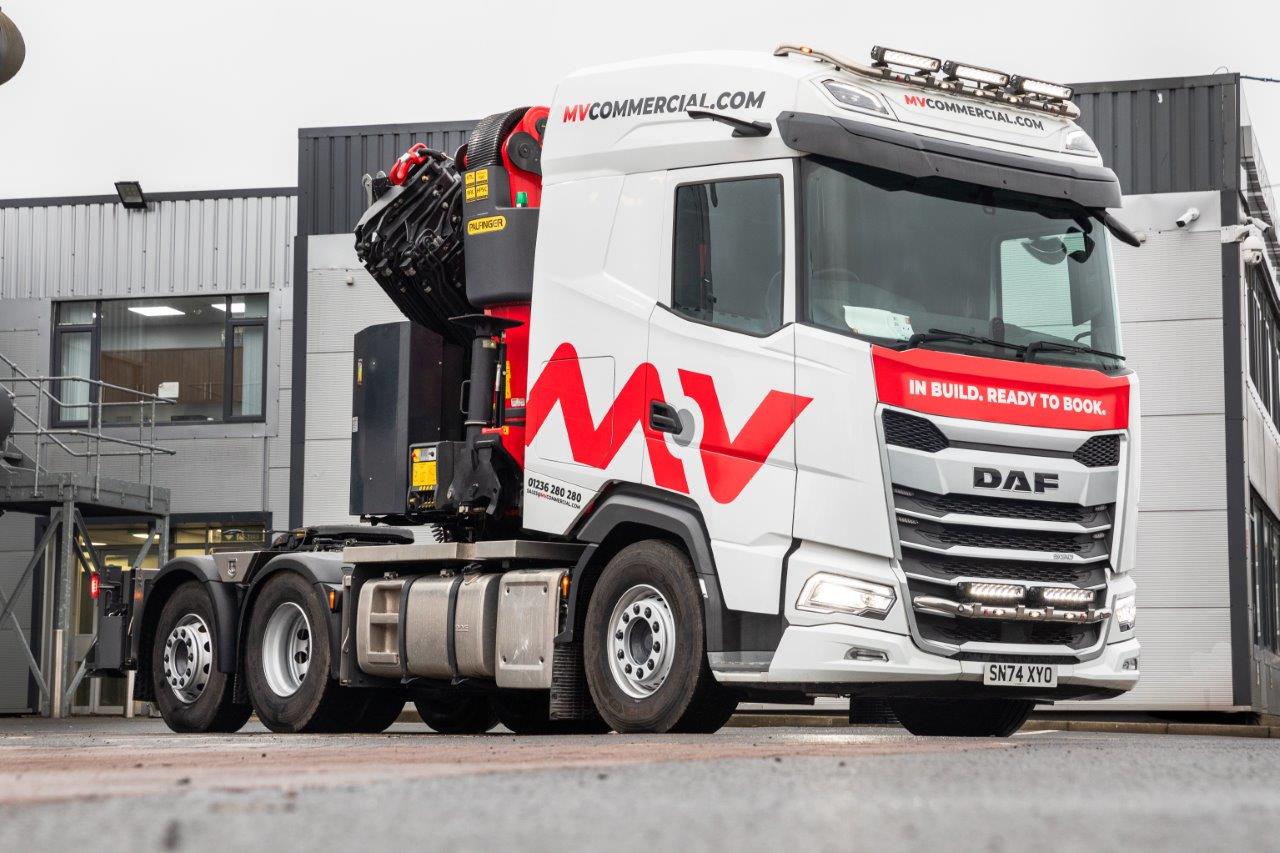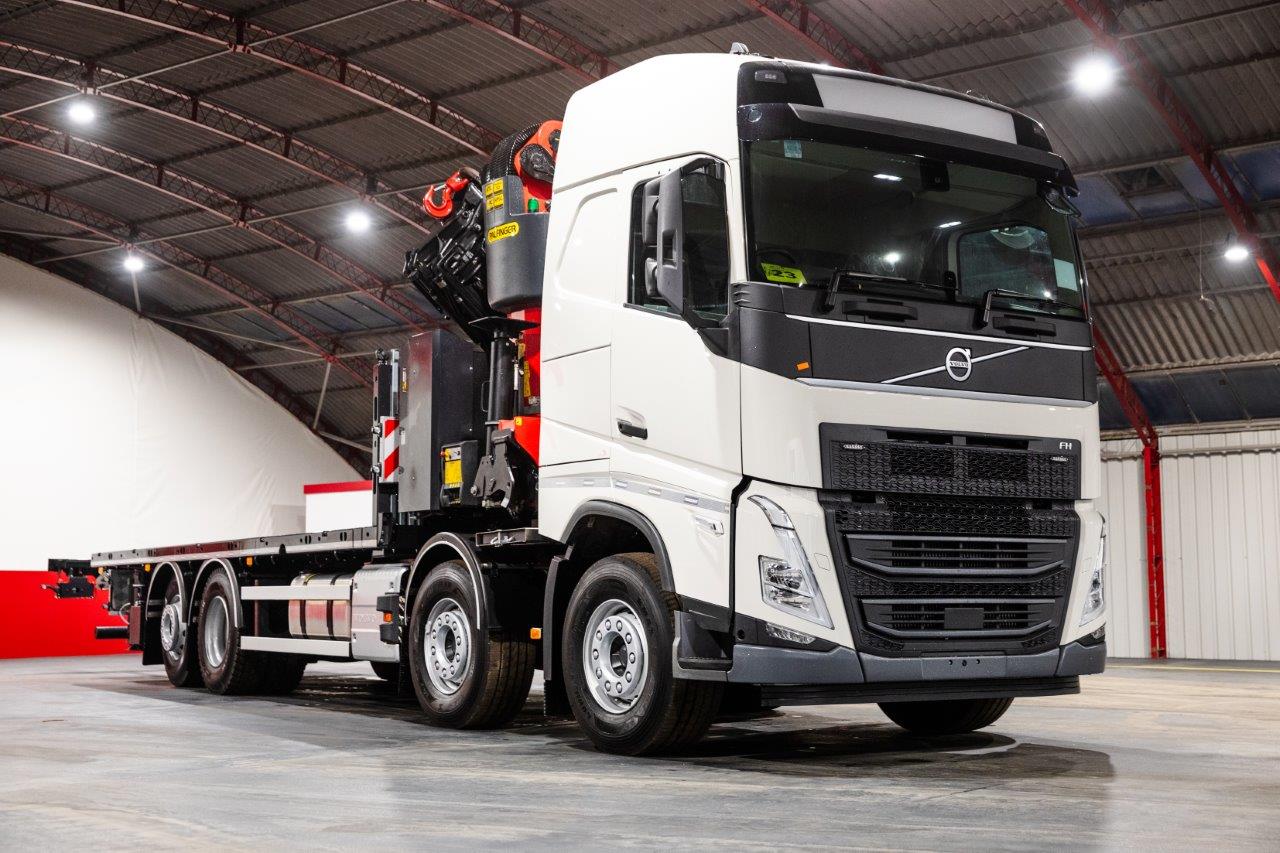Can Crane Trucks be Operated in All Weathers?
The Role of Operators & Training
Can Crane Trucks be Operated in All Weathers?
Operating a crane truck in the UK means contending with everything from steady rain to gale-force winds. While MV Commercial crane trucks are built to operate in difficult conditions, the experience, training, and judgment of the operator are just as crucial as the crane itself.
The question isn't "Can crane trucks be used in all weather?"—it's "How do seasoned operators safely maximise uptime in poor conditions?"
Weather Challenges in Crane Truck Operations
Heavy Rain & Slippery Surfaces
Crane trucks—especially those equipped with HIAB X-HiPro cranes—are well up to performing in wet conditions. Anti-corrosive paint like nDurance and HiPro remote control systems provide assurance that operational safety is upheld. However, wet or muddy ground can result in outrigger instability, something that must be recognized and responded to by the operator with re-siting or the application of stabiliser mats.
Snow, Ice & Freezing Temperatures
While HIAB, Palfinger, and Cormach cranes installed on DAF, Scania, or Volvo chassis are sturdy enough for cold climates, operators must perform additional risk assessments. Training acquaints them with how to:
- Recognize ice hazards under outriggers or tyres.
- Control lifting speeds via Automatic Speed Control (ASC) to avert sudden load movement.
- Use HiPro remote systems to monitor boom operation at a safe distance.
High Winds
Wind brings unique dangers. Trained operators know how to read wind load charts provided by manufacturers like HIAB, derating lift capacities when winds are greater than specified. Most will follow strict site rules to halt lifting in winds over Beaufort scale 6–7.
Operator Training: The Key to All-Weather Crane Truck Success
No matter how advanced the technology—whether VSL PLUS (Variable Stability Logic) or Load Stability Systems (LSS-V)—a crane truck is only as safe as the driver's common sense.
Qualified and certified drivers, often to CPCS, ALLMI, or NPORS standards, receive expert training in:
- Safe lifting practices in poor weather conditions
- Dynamic risk assessment techniques
- The use of crane technology (e.g., CombiDrive remote systems) to minimize environmental risks
- Legal requirements under UK LOLER and PUWER regulations
At MV Commercial, we work with clients who invest in operator training to ensure every crane truck is matched with a skilled specialist.
Crane Technology Adapted to the Unpredictable UK Climate
Our crane trucks enjoy:
- Anti-corrosion protection (nDurance and advanced painting systems)
- Remote diagnostics and telematics via HiConnect
- LSS-V, ASC, and VSL PLUS safety features
However, even with these systems, training is important. An experienced operator will consider wind chill, visibility, and terrain before every lift.
Critical Pre-Lift Checks in Adverse Weather
For Crane Operators
When operating crane trucks in adverse weather conditions, operators should always carry out a good safety inspection before every lift. This is to ensure that the equipment as well as the environment is ready for safe and effective operation. The following is a checklist for crane operators operating in bad weather:
Weather Assessment
- Wind Speed Check: Ensure winds are not in excess of the manufacturer's recommended operational levels. Refer to crane load charts for wind load capacities.
- Temperature Monitoring: Low temperatures will affect hydraulic fluid and equipment performance. Ensure the crane is adequately winterised.
- Visibility: Ensure visibility is sufficient to operate safely. Heavy rain or fog may require cessation or deferment of operations.
Site Conditions
- Assess Ground Stability: On snowy, icy, or wet ground, ensure that the ground will support the weight of the outriggers. If necessary, employ stabiliser mats.
- Snow and Ice: Check the outriggers, boom, and crane chassis for snow or ice. Clear any obstructions before operation.
- Pedestrian & Traffic Safety: On snowy or wet ground, ensure that there are signs and safety barriers to protect pedestrians and workers.
3. Crane Truck & Crane Checks
- Outriggers: Extend all outriggers and ensure they are securely grounded on solid ground. On uneven or icy ground, reposition outriggers.
- Boom & Hydraulic System: Check the hydraulic system for damage or freezing signs. Ensure smooth boom movement, especially in cold temperatures.
- Remote Control: Ensure that the remote control system is operational and that the crane's safety features (LSS-V, VSL Plus, etc.) are enabled.
4. Load Safety
- Load Weight and Position: Ensure that the load is with the crane's rated capacity under the existing weather conditions.
- Load Movement: Be cautious of swinging or moving loads, especially when operating under windy or stormy conditions.
- Tie-Down: Secure and balance all loads to prevent instability during lifting.
5. Operator Safety
- Proper Clothing: Ensure operators wear weather-appropriate clothing, including cold-weather gloves, high-visibility jackets, and slip-resistant shoes.
- Communication: Employ clear communication signals or radio communication among operators and ground personnel during poor visibility.
- Emergency Protocols: Review the emergency procedures for sudden changes in weather or unforeseen hazards.
6. Technology Checks
- HiConnect™ Telematics: Keep an eye on the telematics system for warnings concerning equipment condition, operational efficiency, or maintenance needs.
- Safety Systems: Ensure stability systems (VSL Plus, LSS-V) are current and in good working order.
- Automatic Speed Control: Ensure the ASC system is activated, especially on wet, slippery, or icy roads, for trouble-free and secure operation.
7. Environmental Concerns
- Water Runoff: Verify that water runoff from rain or snow is not collecting around the crane, leading to slipping hazards.
- Contaminants: Verify that the crane and the surrounding area are free from contaminants such as oil, mud, or ice that can hinder safe operations.
Final Check
Before commencing any lifting operation, the operator must make sure that the crane, site, and load are ready for operation under the existing weather conditions. If in doubt or danger, it's important to suspend operations and wait for an improvement in the weather.
MV Commercial: Robust Crane Trucks Built for UK Conditions
Whether you need a HIAB X-HiPro 352, 418, or 548 crane truck, MV Commercial offers hire and purchase options across the UK. Our trucks are designed to function in the inclement British weather.
Hire Crane Trucks for Operation in All Weathers
View Our Range of HIAB Crane Trucks on DAF, Scania & Volvo
*This article is opinion, and should not be construed as legal advice.
Brownsburn Industrial Estate,
Airdrie,
ML6 9SE
